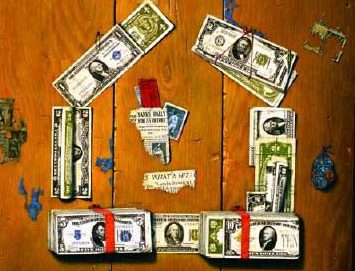I spent the weekend at the Weston Priory, a Benedictine monastery in southern Vermont. I was wearing a Pirates hat for much of the weekend and, wouldn’t you know it, that hat sparked a few conversations. There were two well-wishers (Red Sox and Phillies fans), and one actual Pirates fan (who was also wearing a P-hat).
The Red Sox fan (a Yankees defector, interestingly enough) was bemoaning the Red Sox game 5 loss (game 6 had not yet been played). But more passionately, he was disappointed in Clayton Kershaw’s failure against the Cardinals in the NLCS clincher. In the midst of all of this, I began to worry about a potential Red Sox – Cardinals World Series – which has now come to pass.
My first thoughts were something akin to humiliation. I was already feeling the bad feelings of hearing the anticipated taunts from my former Red Sox brethren. I imagined a bunch of toldya-so’s and the like. I can actually picture a few of them being so direct. I can picture even more of them earnestly offering condolences, thinly available only from the security of their imperial victory.
Just as I was actually feeling the discomfort of words yet to be said to me, I began to ask myself why it mattered so much? Why do I need to be right about this decision to be a Pirates fan? Or maybe more to the point, why would the Red Sox winning prove me ‘wrong’?
The easy answer is that it actually wouldn’t prove me wrong about anything. I’m not putting this blog out into the world in some effort to argue that the Red Sox will never be good again. In fact, that’s very far from the case. If I had to wager a guess, I’d have to say that the current Red Sox ownership has been sufficiently shamed by their quest for a stand-up comedy manager and sexy players that they will focus solely on winning baseball games for the foreseeable future. And with the obscene amount of money available to that cause, the Red Sox will probably make the playoffs for the next decade. That’s something I could be right or wrong about. But leaving a team because they have turned a regional treasure into a money-grabbing PR show is unarguably based on fact.
At the monastery there are many services: Vigils, Vespers, Eucharists, Complines, etc. In the midst of my inner baseball turmoil, I was offered Romans 12:14-15.
‘Bless your persecutors; never curse them, bless them. Rejoice with others when they rejoice, and be sad with those in sorrow.’
We Pirates fans are those in sorrow. However we, by our allegiance to the poor-market team, can best be described as disciples than anything else. Your discipline (yours more than mine) in your faith through two decades (a lifetime for some) of persecution is the reward of righteousness. While there are doubters, and even deniers – as there were in Jesus’s 12 – righteousness is found in faithfulness.
Tangent: As for my own lack of faith in my team of origin… I can reconcile that to the co-opting of my team by the ideals of the empire – and its allegiance to imperialism in all its forms leaves no room for the spirit. Leaving room for the spirit is the field of miracles. Choosing the certainty of the empire is nothing but idol worship – placing all faith in the predictable now rather than the miraculous time to come. Hence, my defection from the empire…
So back to righteousness… Righteousness, as Pirates fans know more than just about anyone else, lies separate from winning and losing. Because a larger victory is at hand. For the day will come when the first will be last, and the last will be first! (But Evan Meek shall not inherit the Earth… ha!)
As Paul instructed the church in Rome (disciples buried deep in the midst of the empire), we should rejoice with others when they rejoice. Cardinals fans are only doing what we would also do in their circumstances – further evidence that we are them, and more importantly, they are us. So I encourage you to smile at the Cardinals victory. Find joy for the families draped in Cardinal red for generations. Find within yourself the place that yearns to cheer for a pennant winner and allow it to express itself through the victory of others. (I wrote the majority of this before the Red Sox clinched and now as I transcribe this from my notebook I want to vomit in my mouth a little… But I can only ask of myself to do the same for the former object of my affections… barf!)
In this moment of find joy with the joyous, I encourage you to find time to shed a tear with those in Dodger blue. We know that other side of the coin called grief. We know that it draws us closer to knowing the righteousness that transcends victory and defeat. And in sports, that righteousness is simply called being a fan.
The Pirates’ day will come. And on that day the righteous will rejoice.
